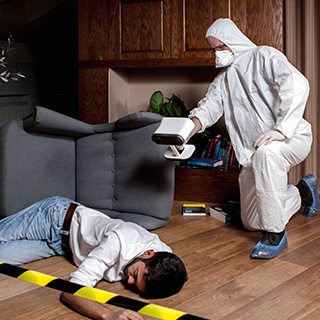Portable 3D scanners have made the process of 3D scanning more accessible than ever before. Instead of having to deal with bulky stationary units, 3D scanning technicians and operators can complete a scan wherever their subject lies, whether that be in the field or the lab. Industries from aerospace to law enforcement are constantly discovering new uses for this type of equipment, and we couldn’t be happier to assist this technology in taking off.
Because the applications of this equipment are practically limitless, it would almost be more effective to name the areas that don’t benefit from 3D scanning—because those are few and far between! But for today, we’re keeping things simple by taking a look at just some of the many possible uses for portable 3D scanners.
1. CGI and Visual Effects
Movies have always held their own special magic, even before the advent of high-tech visual effects. But with the help of 3D scanning, the film industry is poised to get a whole lot more magical.
CGI and visual effects are traditionally quite costly and time-consuming to create—you don’t need to be a movie buff to tell the difference between a made-for-TV special and an arthouse masterpiece, after all. But filmmakers and animators are now using 3D scanning systems like the Artec Eva to scan actors, sets, and props. Working from the resulting 3D models allows them to create high-quality special effects and CGI more quickly than if they were building something from scratch.
2. Product Design
Product design can be a lengthy, drawn-out process filled with disappointments, failed prototypes, and reluctant returns to the drawing board. But this doesn’t have to be the case any longer. 3D scanning offers not only a shortcut, but a more efficient method of designing a product or part that works.
Portable 3D scanners, such as the Artec Space Spider, put the power of 3D imaging directly in the hands of the designer or engineer. With its ability to capture sharp edges and thin walls, the Space Spider is an ideal option for rapid prototyping and manufacturing. 3D scanning in general is proving to be an invaluable timesaver when it comes to refining a product design and pushing it through to production. This technology is used for everything from reverse engineering individual parts to comparing initial prototypes against CAD models. At Laser Design, we’ve directly supported customers in all industries, from automotive and aerospace to prosthetics and wearable technology—and everything in between.
3. Crime Scene Documentation & Accident Reconstruction

Crime Scene documentation is an essential step for police forces investigating the scene of an accident or crime—prior to evidence collection, the site needs to carefully recreated in images so that forensics teams and even attorneys can examine the environment. This painstaking process can be sped up immensely with the help of a portable 3D scanner like the Artec Ray. The resulting 3D image or model will allow investigators to analyze the scene for further clues and insights long after the accident or crime has occurred.
The fact that crime scenes can now be recreated in three dimensions is proving to be a significant help in crime scene analysis. Instead of trying to piece together two-dimensional images, police and even insurance companies utilizing 3D scanners can now evaluate a site and analyze minute details, such as tire tracks, blood spatter and bullet trajectory.
4. Body Scanning
Because 3D scanning doesn’t require the use of positional feedback devices or special markers, it can be used safely on the human body. The process of body scanning creates 3D images and models of a body or body part. This technique is employed in a number of industries for both practical and artistic purposes, such as health and fitness analysis, modeling for animation, or creation of figurines. Body scanning is particularly useful for health professionals and researchers in the medical industry, as this technology is allowing them to study the human body more closely, along with creating custom fitting wearable technology.
We recommend the Artec Eva 3D scanner for projects that require body scanning. This portable scanner boasts a measuring speed of up to 2,000,000 points per second and creates textured models even when the subject is in motion!
How Will You Use Your Portable 3D Scanner?
If you’ve been thinking of investing in an affordable, mobile, high-performing 3D scanner, a portable unit could be exactly what you need to get the job done. Couple an Artec 3D scanner with its powerful 3D scanning software, and you’ll have everything you need to create detailed models and images of your project.
Possibly our favorite part of working with and supplying Artec portable 3D scanners is how simple yet functional they’ve proven to be over the years. The learning curve is extremely favorable with these units—once we get you scanning, you’ll be able to accomplish project after project. We’d love to discuss your needs and help you find the right portable 3D scanner for your application. Don’t hesitate to contact us today with any and all questions.
